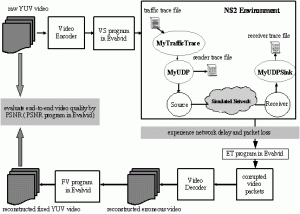With artificial intelligence and the internet of things playing a stellar role in the market of technology, means that humans will be able to interact intelligently with every device through the internet. Howsoever, these devices will store data for the users and there comes a huge need for storage space. A local server will store the data and provide you with the data in your local region, but cloud computing allows you to store the data and access it from anywhere around the globe.
Cloud computing is an Information Technology shift, enabling you to store your data virtually. Virtualization is the major technology that works with cloud computing. The term ‘cloud’ is used because the saved information has no physical presence and it is in a shape of a cloud for the users. The word is used as a metaphor for the internet to denote a network on telephony schematics. For users to use the data at remote locations, Dynamic virtual machines are created to provide access to actual infrastructure for them.
Cloud computing, has a broad scope for the PhD candidates in the field of electronics, in various sub-areas, including resource allocation, cloud data security, job scheduling, etc. The question of the protection of the data on the cloud has been a prominent question, ever since people has started to store data on it. Recently, the researchers have come up with the encrypted code as a solution to the breach of data, yet there is still scope for the scholars to research on the issue of security. Also, there are dynamic resource allocation schemes for the PhD candidates to study on the topic.
To research the field of cloud computing, one has to narrow down the research area from the areas mentioned above initially. You can not take the topic of security and conduct research on it; you have to narrow down the matter of security to ‘secure cloud architecture’, ‘cloud cryptography’, ‘access control and key management’, and various other security management problems of this virtual computing. Narrowing down the topic will help the researcher set an aim and objective to conduct the research.
Once the area of the research has been narrowed down from a broader field to a more taper area, the researcher shall review the recent researches on the topic to find the issue in the area. Reviewing the literature review will give the researcher with a list of drawbacks in the area as he considers all the researches in the field. Analysing the drawbacks and issues in the existing literature will not solve the problem of the topic, the literature will also provide you with a scope of researching the topic you have chosen and are going forward with. Define the algorithm or technique by which you aim to resolve the issue and build a better cloud computing structure.
For a real-time application, the researcher can employ AWS (Amazon Web Services), where various objectives can be catered like resource allocation, data security can be modelled. A real-time application is an application programme that functions within the current time frame, and with AWS the users can buy space on the cloud to develop applications. However, for prototype modelling, the same can be used in cloudsim simulator and dedicating a certain number of virtual machines over which the data can be carried out. Using AWS or cloudsim is based on the application the person is using.
